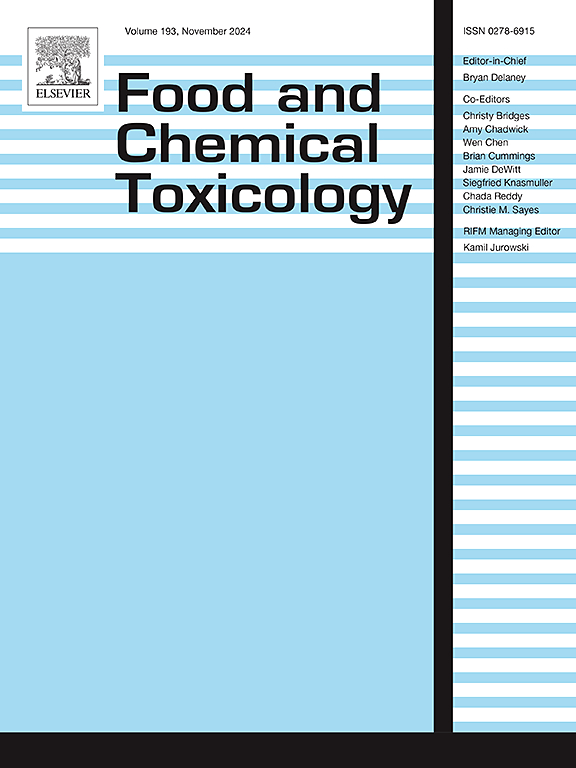Endocrine-disrupting effects of 24 colorants used in food contact materials: In vitro and in silico studies
IF 3.9
3区 医学
Q2 FOOD SCIENCE & TECHNOLOGY
引用次数: 0
Abstract
Current research on endocrine-disrupting effects of colorants utilized in food contact materials (FCMs) ramains limited. This study investigated these effects through in vitro cell models and in silico toxicological models. A total of 24 synthetic colorants were collected from the Chinese market, including azo, anthraquinone, heterocyclic and fused-ring ketones, and phthalocyanines. Their endocrine-disrupting effects mediated by estrogen and androgen receptors were evaluated using an in vitro dual-luciferase reporter gene assay. Results showed no estrogenic or anti-estrogenic effects or androgenic activity in the colorants. However, three colorants, C.I. Pigment Red 177, C.I. Pigment Orange 71, and C.I. Pigment Blue 15, elicited anti-androgenic effects with 20 % relative inhibitory concentrations (RIC20) of 13.08, 40.52, and 33.27 μg/mL, respectively. In addition, in silico toxicological models predicted the endocrine-disrupting activity of the 24 colorants, showing predictive accuracy ranging from 35 % to 100 % consistency with in vitro experimental outcomes. Molecular docking revealed strong binding affinity and mechanisms of interaction between three colorants and the human androgen receptor. In summary, this study combined in vitro experiments and in silico toxicological models to investigate the endocrine-disrupting effects of organic colorants with different structural types, providing new insights perspective on health risks associated with their use in FCMs.

求助全文
约1分钟内获得全文
求助全文
来源期刊

Food and Chemical Toxicology
工程技术-毒理学
CiteScore
10.90
自引率
4.70%
发文量
651
审稿时长
31 days
期刊介绍:
Food and Chemical Toxicology (FCT), an internationally renowned journal, that publishes original research articles and reviews on toxic effects, in animals and humans, of natural or synthetic chemicals occurring in the human environment with particular emphasis on food, drugs, and chemicals, including agricultural and industrial safety, and consumer product safety. Areas such as safety evaluation of novel foods and ingredients, biotechnologically-derived products, and nanomaterials are included in the scope of the journal. FCT also encourages submission of papers on inter-relationships between nutrition and toxicology and on in vitro techniques, particularly those fostering the 3 Rs.
The principal aim of the journal is to publish high impact, scholarly work and to serve as a multidisciplinary forum for research in toxicology. Papers submitted will be judged on the basis of scientific originality and contribution to the field, quality and subject matter. Studies should address at least one of the following:
-Adverse physiological/biochemical, or pathological changes induced by specific defined substances
-New techniques for assessing potential toxicity, including molecular biology
-Mechanisms underlying toxic phenomena
-Toxicological examinations of specific chemicals or consumer products, both those showing adverse effects and those demonstrating safety, that meet current standards of scientific acceptability.
Authors must clearly and briefly identify what novel toxic effect (s) or toxic mechanism (s) of the chemical are being reported and what their significance is in the abstract. Furthermore, sufficient doses should be included in order to provide information on NOAEL/LOAEL values.
 求助内容:
求助内容: 应助结果提醒方式:
应助结果提醒方式:


